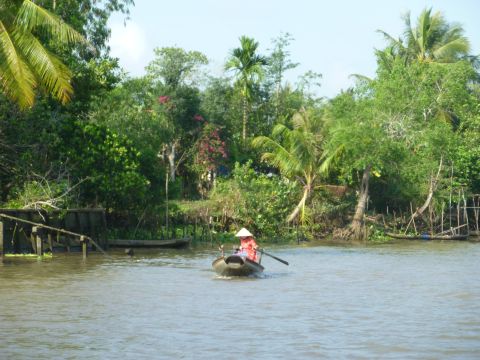Hugo recommendations
So, with the deadline for the Hugos approaching, I thought I’d do some recommending. Herein is the stuff I’m really rooting to get onto the ballot. (fair warning: I know a lot of the people involved here, but I’m only recommending the stuff I loved, and sharing it in the hope that you’ll find some gems of your own in there).
Best short story:
–“As Women Fight” by Sara Genge (Asimov’s December 2009): a nice and thoughtful take on gender changes, taking place on a planet where the gender in a couple is determined by who wins the annual fight. With neat reflections on friendships, abuse and the dividing line between man and woman. It’s been collected in two Year’s Bests, has made the Locus Recommended List, and I’ve already seen some support for it in the Hugo competition. Definitely worth a read.
–“The Chrysanthemum Bride” by Angela Slatter in Fantasy Magazine, a dark story set in Ancient China, about a poor but vain daughter of peasants taken to be the bride of the emperor. Truly horrific, and will linger in your mind long after you’ve finished it.
Best novelette:
–“Sinner, Baker, Fabulist, Priest; Red Mask, Black Mask, Gentleman, Beast” (Interzone 220, reprinted online in Apex): ok, the title has me checking it every time I type it out, but this is one that’s made of awesome. Set in a world where people don new identities every morning with the help of masks, this one follows a typical individual as he stumbles onto the foundations of the society. It’s strange and rich with beautiful language, and a kickass ending.
Best novel:
–By the Mountain Bound by Elizabeth Bear: a story that takes its inspiration in Norse myths, it follows the einherjar and the valkyries, the Children of the Light who try to uphold the order of a new world even though their Father (Odin) has died in Ragnarok. When a strange woman washes ashore, claiming to be the Lady, one of the gods the Children have been waiting for. She means to fight the prophecied war against their enemies–but is she really who she claims to be?
This one is a prequel to All the Windwracked Stars, which I also loved. Unlike its sequel, it’s definitely more epic fantasy in tone–but it takes its cues from the Norse epics, which are far more sombre and violent than most moden fantasies. I loved the ending–and loved that Elizabeth Bear had the guts and the skills to pull this off.
–Canticle by Ken Scholes: sequel to Lamentation, this one continues to follow Scholes’ characters as they inch every closer to the secret of the destruction of the city of Windvir. Gypsy leader Rudolfo faces assasination attempts, and the birth of his own sickly son; young Neb seeks a secret in the desolate Wastes, one that could change the face of the Named Lands; and Winters, the ruler of the Marsh People, has to deal with heresies among her own people. Scholes melds religion and science brilliantly in this post-apocalyptic fantasy–this is even better than Lamentation (which had already blown me away).
–The Shifter by Janice Hardy: I really wish there were a YA category on the ballot, but in the absence of that we’ll make do with Best Novel :=) The Shifter (aka The Pain Merchants in the UK) is the story of Nya, an orphan in a world where pain can be shunted off into a special metal. But Nya is special: she can shift pain into other people. When her sister disappears, Nya has to use her abilities to find her–without letting herself be found out and used as a weapon…
It’s got an awesome core concept, and a unique and fun voice for Nya that makes the whole book very endearing. Also, it doesn’t shy away from darker moral choices, definitely making it stick in the mind.
Best Semiprozine:
–Interzone: regularly on the semiprozine ballot without my plug, I suspect, but still… I do love the magazine. It’s really willing to take risks and publish very different kinds of stories, and the fiction offerings are neatly complemented by DVD and book reviews. Been a subscriber for 4 years; and I fully intend to renew this one. For an example of cool fiction, see the Foster story above.
–Beneath Ceaseless Skies: another one of the few I enjoy reading regularly: there’s a tremendous variety of style and subject matter, and a mix of new and established authors that combines to a very pleasant result. For an example of cool fiction, see the rich and complex “Thieves of Silence” by Holly Phillips, or Rodello Santos’s atmospheric “To Slay with a Thousand Kisses”, a neat take on cursed spirits.
Best Fanzine:
–StarshipSofa: yup, podcasts are eligible for the Hugo. Check out my previous post for more info.
Campbell Award:
–Rochita Loenen-Ruiz (First Year of Eligibility): Rochita has published fiction in Apex, Fantasy Magazine and Weird Tales. She has this beautiful, fluid writing style that allows her to move smoothly from a humorous, whimsical story like “Teaching a Pink Elephant to Ski” to more sombre subject matters like the plague-wracked world of “59 Beads”. My only regret is that she writes so little, because I sure as heck want to see more of her fiction out there getting recognition.
–Juliette Wade (Second Year of Eligibility): Juliette is a member of my crit group, Written in Blood, who has sold stories to Analog. She draws on her experience as a linguist to craft strange and utterly believable alien races in stories like “Cold Words” or “Let the Word Take Me”. She also has an awesome blog, “Talk to You Universe”, where she discusses worldbuilding, linguistics and strange customs, a must for spec-fic writers.
–Chris Kastensmidt (Second Year of Eligibility): Chris got a little unlucky for Campbell purposes, as he sold a single eligible story before a drought, a humorous retelling of Little Red Hood co-published with Jim C. Hines. His story “The Fortuitous Meeting of Gerard van Oost and Oludara”, an awesome tale of adventure, treasure hunting and magic set in colonial Brazil, is due out in the next issue of Realms of Fantasy. In the meantime, you can read his more humorous (but slightly dated) stuff here and here, and check out his awesome website for the Gerard van Oost and Oludar series here.
–Sean Markey (Second Year of Eligibility): Sean writes quirky stories with beautiful language. Check out “The Spider in You,” in Strange Horizons, a very odd and dark story about people who worship large poisonous spiders as gods, or “Waiting for the Green Woman”, a story of a very peculiar father-daughter relationship: what do you do when your daughter is a tree in the desert?
–Shweta Narayan (First Year of Eligibility): I really enjoy her stories–including “The Mechanical Aviary of Emperor Jalal-ud-din Muhammad Akbar”, in the Shimmer Jungle Clockwork issue, a clever set of nested stories set within a Hindu/Mughal milieu, and “Nira and I” in Strange Horizons, a beautiful story about mists, spirits and caste divisions.



